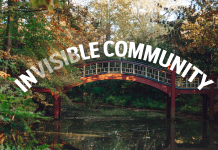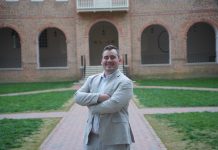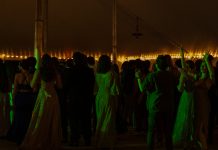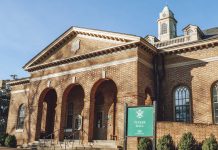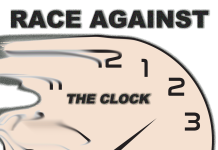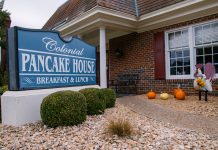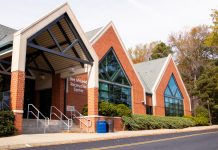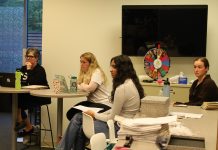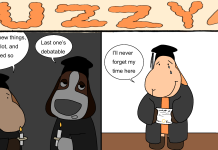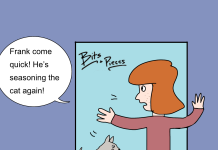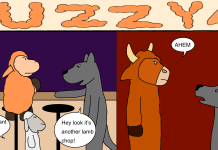The historic Richard Charlton Coffeehouse, located near the colonial Capitol building at the end of Duke of Gloucester Street, is undergoing a reconstruction project that should see its completion by the end of 2009.
The Charlton Coffeehouse will be the only one of its kind in the United States, offering visitors a unique taste of the past.
The coffeehouse is significant for many reasons. Because of its close proximity to the Capitol, it served as a focal point for social and political activity in Colonial Williamsburg. If you’re wondering where Thomas Jefferson went for a pick-me-up in 18th century Williamsburg, you don’t need to look much farther than the Charlton.
“Some of the greatest minds of the pre-Revolutionary period probably frequented the coffeehouse,” anthropology professor Marley Brown said.
Like other American coffeehouses of its time, the original Charlton Coffeehouse sought to recreate the style and atmosphere of traditional coffeehouses in London. Visitors predominantly drank coffee and tea, but during excavation, archaeologists unearthed fragments of broken wine bottles, indicating that alcoholic beverages were eventually served to patrons.
When it reopens, the coffeehouse will offer coffee, tea and other refreshments typical of the 18th century.
The interior is being carefully reconstructed and redecorated to preserve the colonial feel and atmosphere.
The Charlton Coffeehouse is being reconstructed in part because of its historical significance to Williamsburg and its broader educational value. In 1765, at the height of the Stamp Act, Lt. Governor
Francis Fauquier saved a Virginia stamp distributor named George Mercer from being beaten by an angry rioting mob. Fauquier had been relaxing on the front porch of Charlton’s with fellow governmental officials before performing his act of heroism.
Visitors to the coffeehouse will have the chance to experience authentic colonial re-enactments, such as the Stamp Act riot.
“I’ve always enjoyed colonial re-enactments, so I think it would be both entertaining and educational to see a modern interpretation of the Stamp Act events,” Brad Bell ’09 said.
But undoubtedly a more overarching goal of the reconstruction project is to educate visitors on colonial coffeehouses and their function in society as a place for business dealings, casual gossip and town-wide social functions.
“One of the most interesting discoveries made at the Coffeehouse was finger bones from a human skeleton,” Brown said. “Examination of the bones revealed residue from copper wire, which suggests that the bones were part of an anatomical skeleton that was perhaps used as a prop for a lecture. So, clearly, people came for fine dining, lectures and other cultural activities.”
The Coffeehouse construction site is currently open to all students of the College.




